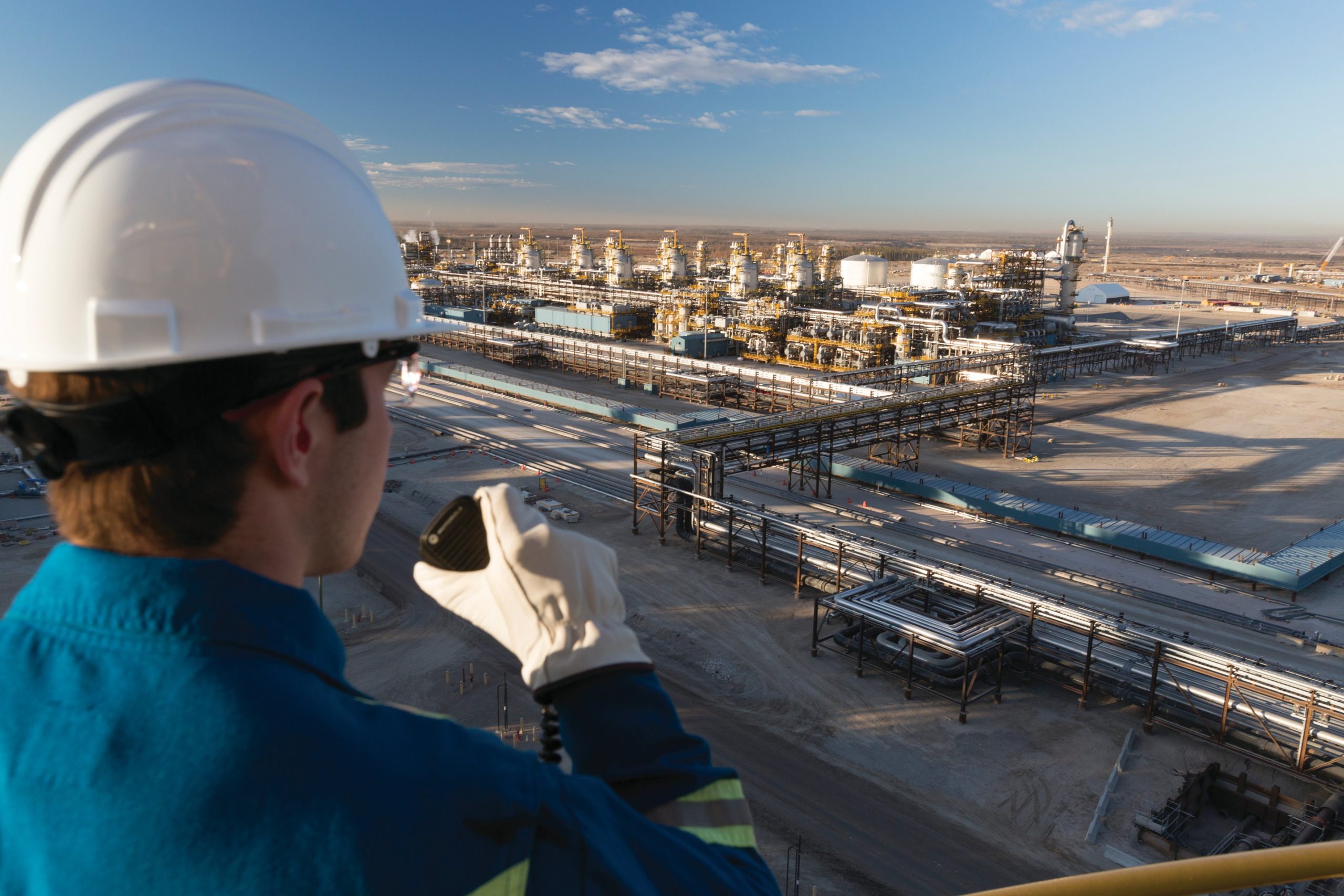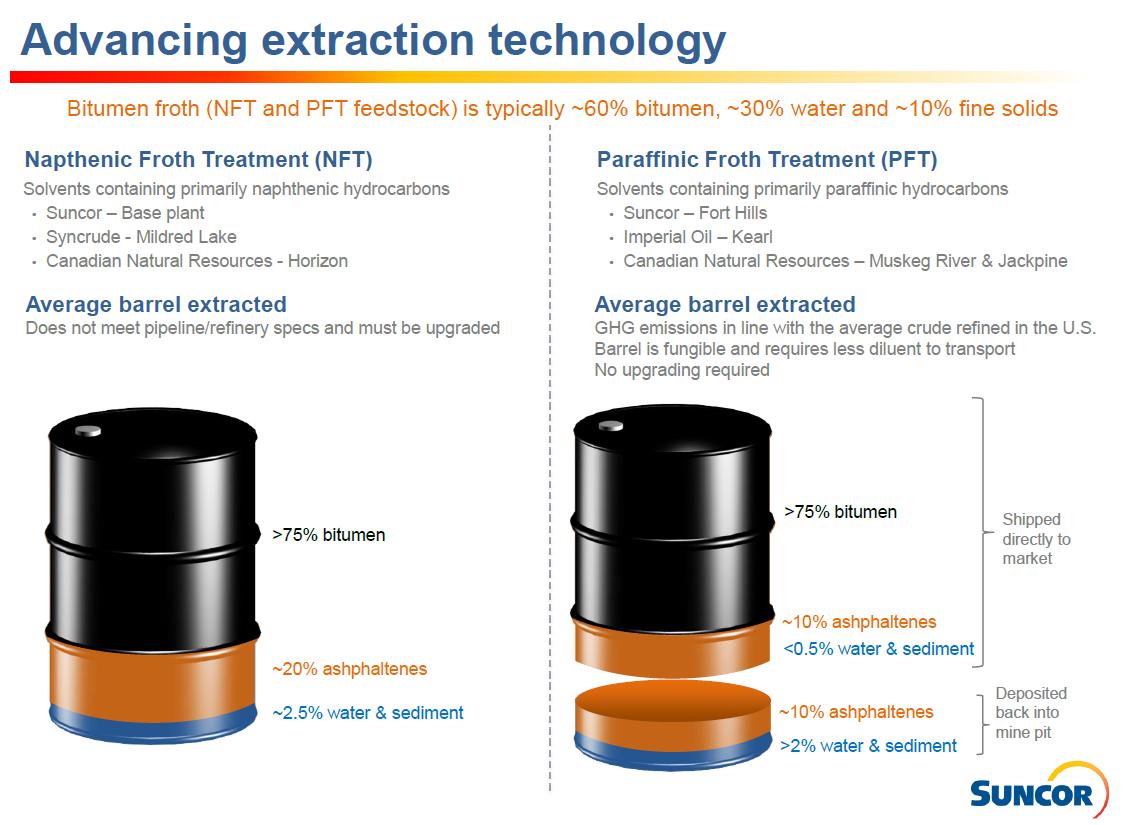
The oil sands sector’s average emissions per barrel is coming down thanks to new technology and improved processes – in some cases, today’s oil sands crude has lower emissions intensity than the average oil consumed in the U.S.
About 12 per cent of oil sands production – or about 350,000 barrels per day – comes from a mining project process known as paraffinic froth treatment (PFT). In 2018 the greenhouse gas emissions per barrel of PFT crude averaged 1.6 per cent below the U.S. average, according to analysts with IHS Markit.
Suncor Energy CEO Mark Little has called PFT “accelerated carbon sequestration,” where the parts of the oil sands barrel that are most energy intensive to treat are removed prior to further processing, reducing CO2 emissions.
Suncor opened Canada’s newest PFT oil sands mine, Fort Hills, in January 2018. The project’s successful ramp-up contributed to a 10 per cent drop in the overall emissions intensity of oil sands mining between 2017 to 2018, IHS Markit says.
This was the second greatest year-on-year drop in the estimated history of oil sands mining operations; the largest was a 12 per cent decrease between 2014 and 2015.
Imperial Oil vice-president Sherri Evers says that with PFT, “Really what you end up left behind with is a very clean bitumen product that you can actually ship without having to be further processed or upgraded.”
Imperial Oil has been using PFT at its Kearl oil sands mine since startup in 2013.
Evers explained to a virtual energy symposium hosted by the Canadian Association of Petroleum Producers and Scotiabank this week that the process occurs after bitumen froth is extracted from mined oil sands.
“Bitumen froth produced in extraction is a mix of bitumen, fine solids and water, and it requires further cleaning essentially before it can be upgraded into crude or sold into the market. Paraffinic froth treatment is a process where the water, the fine solids and some asphaltenes are removed from the bitumen froth, and that is done using extraction with hydrocarbon solvents.”

In addition to Fort Hills, analysts report that four out of five legacy oil sands mining operations realized reductions in emissions intensity in 2018 thanks to energy efficiency improvements and reductions in the use of petroleum coke.
IHS Markit estimates that average oil sands emissions per barrel range from 1.6 per cent below to 8.6 per cent above the U.S. average, depending on production process.
Overall oil sands emissions intensity declined by over 23 per cent between 2012 and 2019, according to Government of Alberta data. The province forecasts that leading producers are on track for a further 16-23 per cent reduction over the coming decade.